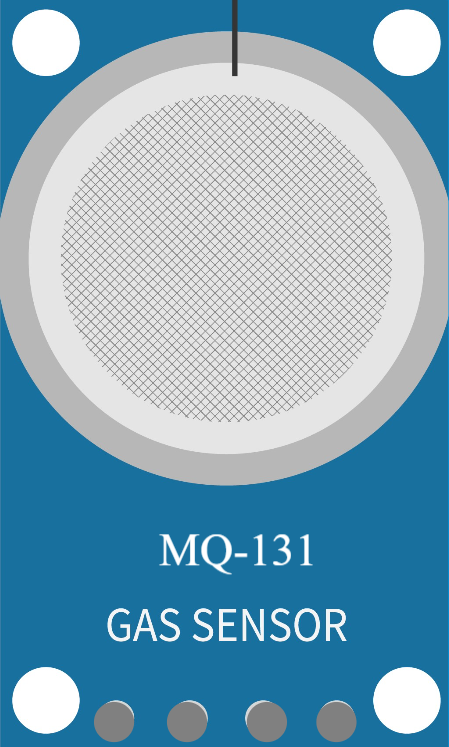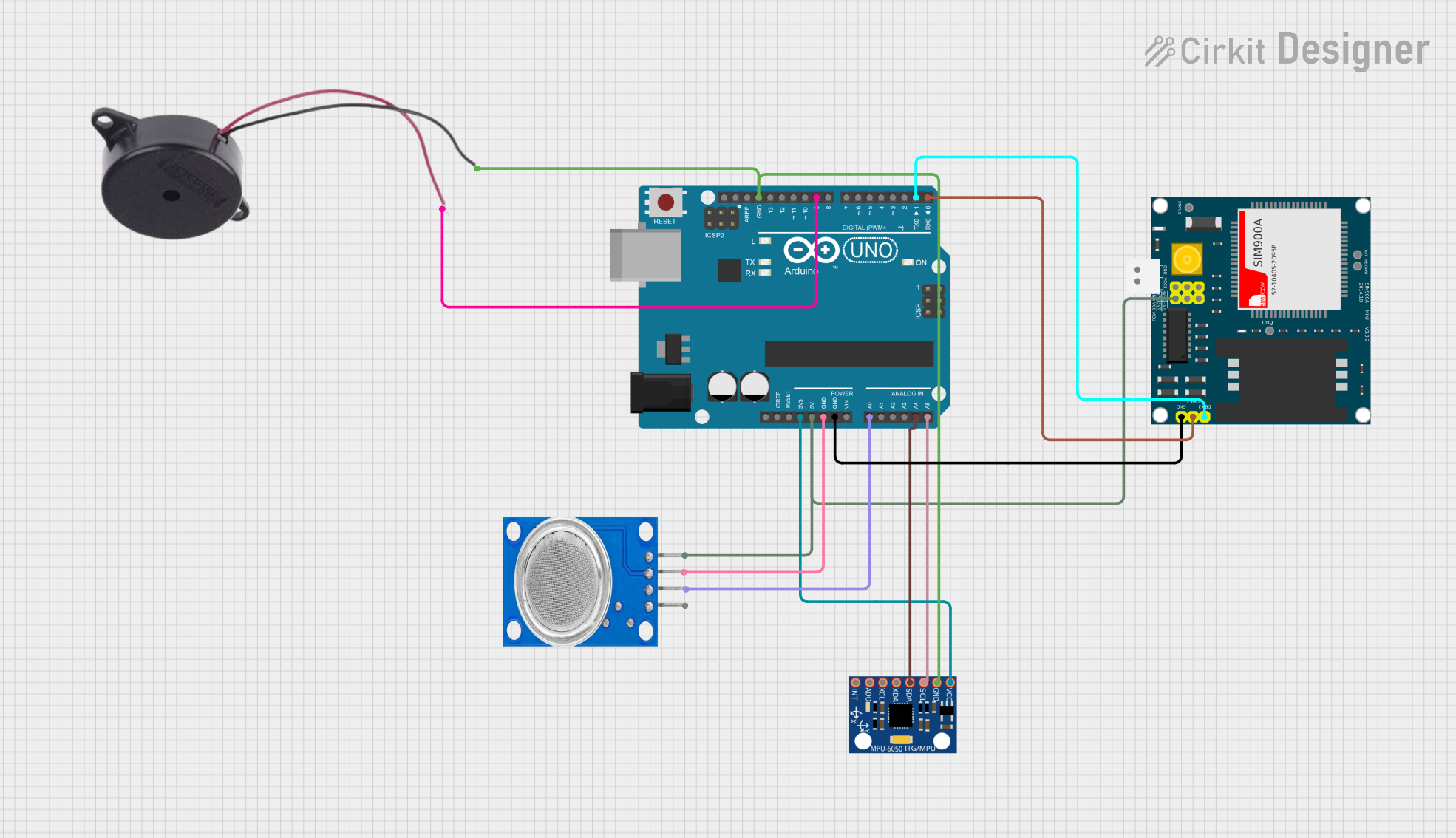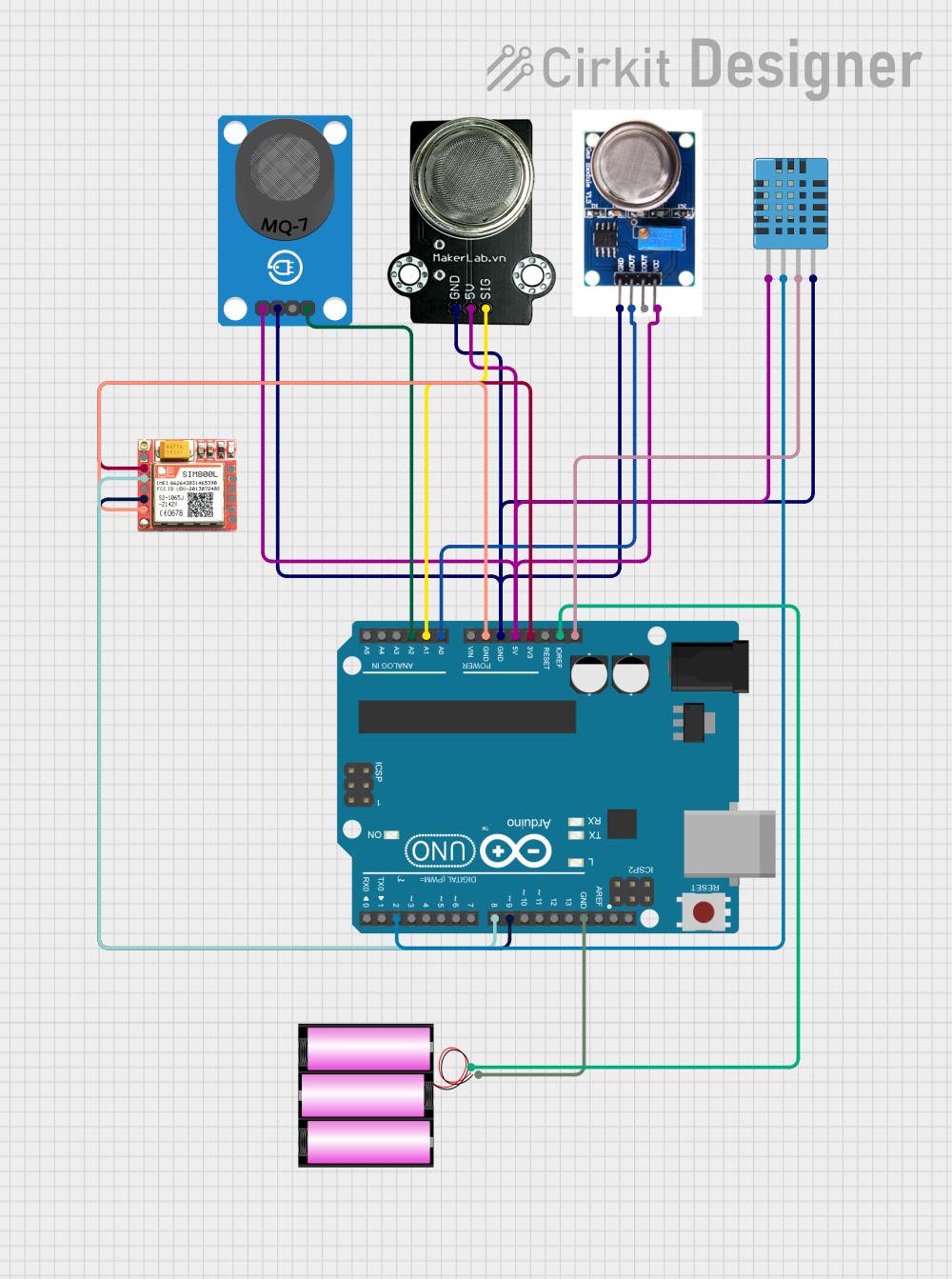
How to Use MQ131: Examples, Pinouts, and Specs

 Design with MQ131 in Cirkit Designer
Design with MQ131 in Cirkit DesignerIntroduction
The MQ131 is a gas sensor designed to detect ozone (O₃) concentrations in the air. It operates on the principle of resistive change, where the sensor's resistance varies based on the presence of ozone. This analog output can be used to measure ozone levels, making the MQ131 an essential component in air quality monitoring systems.
Explore Projects Built with MQ131

 Open Project in Cirkit Designer
Open Project in Cirkit Designer
 Open Project in Cirkit Designer
Open Project in Cirkit Designer
 Open Project in Cirkit Designer
Open Project in Cirkit Designer
 Open Project in Cirkit Designer
Open Project in Cirkit DesignerExplore Projects Built with MQ131

 Open Project in Cirkit Designer
Open Project in Cirkit Designer
 Open Project in Cirkit Designer
Open Project in Cirkit Designer
 Open Project in Cirkit Designer
Open Project in Cirkit Designer
 Open Project in Cirkit Designer
Open Project in Cirkit DesignerCommon Applications and Use Cases
- Air quality monitoring systems
- Industrial ozone detection
- Environmental research and analysis
- Smart home air purification systems
- Ozone leakage detection in industrial settings
Technical Specifications
The MQ131 sensor is available in two variants: low concentration and high concentration. Below are the key technical details for both variants:
| Parameter | Low Concentration Variant | High Concentration Variant |
|---|---|---|
| Detection Range | 10 ppb to 2 ppm | 1 ppm to 10 ppm |
| Heater Voltage (VH) | 5V ± 0.2V | 5V ± 0.2V |
| Load Resistance (RL) | Adjustable (typically 10kΩ) | Adjustable (typically 10kΩ) |
| Heating Current (IH) | < 120 mA | < 120 mA |
| Preheat Time | ≥ 24 hours | ≥ 24 hours |
| Operating Temperature Range | -20°C to 50°C | -20°C to 50°C |
| Humidity Range | 20% to 90% RH | 20% to 90% RH |
| Output Signal | Analog voltage | Analog voltage |
Pin Configuration and Descriptions
The MQ131 sensor module typically has 4 pins. Below is the pinout description:
| Pin | Name | Description |
|---|---|---|
| 1 | VCC | Power supply input (5V) |
| 2 | GND | Ground connection |
| 3 | AOUT | Analog output signal, proportional to ozone concentration |
| 4 | DOUT | Digital output signal (threshold-based, requires onboard potentiometer tuning) |
Usage Instructions
How to Use the MQ131 in a Circuit
- Power the Sensor: Connect the VCC pin to a 5V power supply and the GND pin to ground.
- Connect the Output:
- Use the AOUT pin for analog readings to measure ozone concentration.
- Optionally, use the DOUT pin for a digital signal if a threshold is set using the onboard potentiometer.
- Preheat the Sensor: Allow the sensor to preheat for at least 24 hours before taking accurate measurements.
- Read the Output:
- For analog readings, connect the AOUT pin to an ADC (Analog-to-Digital Converter) pin on a microcontroller.
- For digital readings, connect the DOUT pin to a digital input pin on the microcontroller.
Important Considerations and Best Practices
- Preheating: The MQ131 requires a long preheating time (≥ 24 hours) to stabilize its readings.
- Calibration: Calibrate the sensor in a controlled environment to ensure accurate ozone concentration measurements.
- Ventilation: Ensure proper ventilation around the sensor to avoid saturation or inaccurate readings.
- Load Resistance: Adjust the load resistance (RL) based on your application to optimize sensitivity and accuracy.
- Temperature and Humidity: Operate the sensor within the specified temperature and humidity range for reliable performance.
Example: Using MQ131 with Arduino UNO
Below is an example of how to connect and read data from the MQ131 sensor using an Arduino UNO:
// MQ131 Ozone Sensor Example with Arduino UNO
// Connect AOUT to A0 pin on Arduino for analog readings
// Ensure the sensor is preheated for at least 24 hours before use
const int MQ131_AOUT = A0; // Analog output pin connected to A0
float sensorValue; // Variable to store the sensor reading
void setup() {
Serial.begin(9600); // Initialize serial communication at 9600 baud
pinMode(MQ131_AOUT, INPUT); // Set AOUT pin as input
}
void loop() {
// Read the analog value from the sensor
sensorValue = analogRead(MQ131_AOUT);
// Convert the analog value to a voltage (assuming 5V reference)
float voltage = sensorValue * (5.0 / 1023.0);
// Print the raw sensor value and voltage to the Serial Monitor
Serial.print("Raw Sensor Value: ");
Serial.print(sensorValue);
Serial.print(" | Voltage: ");
Serial.print(voltage);
Serial.println(" V");
// Add a delay for stability
delay(1000); // Wait 1 second before the next reading
}
Troubleshooting and FAQs
Common Issues and Solutions
No Output Signal:
- Ensure the sensor is properly powered (5V to VCC and GND connected).
- Verify that the sensor has been preheated for at least 24 hours.
Inaccurate Readings:
- Check if the sensor is operating within the specified temperature and humidity range.
- Calibrate the sensor in a controlled environment with known ozone concentrations.
Fluctuating Output:
- Ensure proper ventilation around the sensor to avoid saturation.
- Verify that the load resistance (RL) is correctly adjusted for your application.
Digital Output Not Triggering:
- Adjust the onboard potentiometer to set the desired threshold for the DOUT pin.
FAQs
Q: Can the MQ131 detect gases other than ozone?
A: The MQ131 is specifically designed for ozone detection. While it may respond to other gases, its sensitivity and accuracy are optimized for ozone.
Q: How long does the sensor last?
A: The MQ131 has a typical lifespan of 2-3 years under normal operating conditions. Proper maintenance and usage can extend its life.
Q: Can I use the MQ131 outdoors?
A: Yes, but ensure the sensor is protected from extreme weather conditions and operates within the specified temperature and humidity range.
Q: Why is preheating necessary?
A: Preheating stabilizes the sensor's internal structure, ensuring accurate and consistent readings. Skipping this step may result in unreliable measurements.